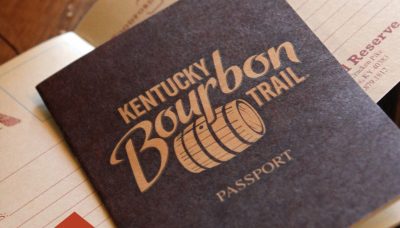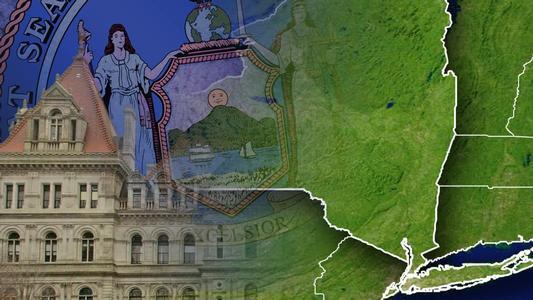
On August 28, 2012, Governor Andrew Cuomo declared his intention to make New York State history great again. The occasion was the launching of his Path through History project. I attended the program in Albany and still have the materials and souvenirs from that day. The program was intended to generate revenue (and jobs) through the telling of the history of New York to tourists.
The plenary address was given by Ken Jackson, Columbia University, Mr. New York State History. In his address, Ken spoke of the ways in which New York had been a national leader over the centuries. He recounted various events, named various people and places, and highlighted the prominence of the Empire State. He also noted how much better other states like Massachusetts, Pennsylvania, and Virginia were at touting their own stories than New Yok was. You would never know that George Washington spent more time here than in any other state over the 1775-1783 period.
In the years to come, the Path through History quickly became a joke and embarrassment. Instead of being a revenue generator, it became a project of signs, a scarcely used website, brief programs not during the tourist season that historic sites already did anyway, and no paths. The best that could be said for it was that it created a logo and phrase for I LoveNY and history sites to use as a brand. It did nothing to fulfill its original promise that had brought hundreds of people to Albany six years ago to expectantly witness its birth.
As a result, Ken Jackson morphed from plenary speaker to critic. He criticized the program in a letter to Cuomo. He criticized the program when speaking at subsequent conferences. He criticized the program in private conversations. The program certainly has garnered its share of critical columns here in this history column. All to no avail. The Path through History mocked the idea of making New York History great again through telling its story to tourists.
Perhaps the most egregious exposure of its shortcomings occurred in the AMC cable series “Turn” (for example, see AMC Mocks the Path through History). The nationally-shown program was about America’s first spy ring, the Culper Spy Ring, based in Setauket, Long Island, in New York. Although the show was filmed in Virginia, the story was a New York one. Who advertised on the show to visit the historic sites of the American Revolution? If you guessed Virginia, you are right. Come see where it happened. In Virginia. One might think New York would make that claim since the scenes were in New York, but no, it was Virginia that marketed its history to the national audience. Perhaps it was just as well. If someone had flown into JFK or LaGuardia to see the American Revolution sites shown in the series, no American Revolution Path through History itineraries had been created. Make New York State History great indeed! New York had been handed an opportunity on a silver platter to reach a national audience and did nothing.
The South has continued to show up the Empire State. As reported in previous posts, the southern states collaborated to produce a Civil Rights Trail (for example, see The Confederacy Trumps New York on Civil Rights Tourism). It opened January 1, 2018. That effort involved creating teams of people from the tourist, economic development, and academic sectors to cooperate and collaborate to produce the trail. New York State had talked the talked of doing that when the Path through History was launched but it hasn’t happened. To add more insult to injury, the U.S. Civil Rights Trail has attracted interest even in New York publications (for example, see In the South and North, New (and Vital) Civil Rights Trails, Learning About the Civil Rights Era Through Travel, and On a Civil Rights Trail, Essential Sites and Indelible Detours). When was the last time you read about someone following a Path through History trail? Even the events listed on the path website on Father’s Day and in October are of short duration intended for people within a 50-mile radius as a daytrip.
Speaking of trails, let’s not overlook the Kentucky Bourbon Trail. New York may have its wineries, but Kentucky has its Bourbon Trail. The Trail is complete with maps, mugs, t-shirts, history booklets, an itinerary and a passport. The website provides a suggested seven-day trip with an optional eighth day. It explains how the passport can be obtained and used. Seen any Path through History passports lately? Is there a winery one? Puts New York to shame. Sad.
By these comments, I do not mean to suggest that nothing has happened. We now do have a fulltime state historian but that is not due to the Governor. The New York State Museum has exhibits in recognition of the two centennials – women gaining the right to vote in 1917 and New York’s involvement in World War I – but they are not due to the Governor. The New York State Barge Canal has begun celebrating the Erie Canal bicentennial from the beginning of construction on July 4, 1817, to the completion with the Wedding of Waters on November 4, 1825. The New York State Office of Parks, Recreation, and Historic Preservation still operates but the parks and recreation take precedence over the historic sites under its administration, just as they always will. So, yes, things are still happening at the state level related to history.
I operate in the basis of the 80% rule. As a New Yorker, not Yogi Berra, is said to have said, 80% of life is showing up. The issue is not whether the bureaucratic momentum continues to grind forward on a routine basis but of leadership. What about the extra 20% that requires more than just showing up? In baseball terms, this is known as wins over replacement (WAR). One analytically examines what a player contributes above and beyond just showing up, just being a replacement. Does this player add to the team value? Will the team win more?
For example, next year is the centennial of the state requirement for municipalities to have an historian. Sometimes even our Governor has mentioned this law as a sign of New York State’s commitment to its history. The law is often honored in the breach. Too many municipalities have no historian. The responsibilities are ill-defined especially given the new technologies available for the storing and dissemination of information to the general public. When the position does exist, it is often disrespected or minimized. There is no training. All in all, it is easy to see why there are no plans to celebrate the centennial – it would only highlight the shortcomings which need to be fixed.
So here are some suggestions as to how a governor could provide the leadership to make New York State history great again. They are offered in the hopes that the victorious candidate will rise to occasion and set New York on a great path through history. One should note that the implementation of these suggestions requires the assistance of the Regents and the Legislature as well.
MUNICIPAL HISTORIANS
1. Celebrate the centennial in 2019 of the legislation creating municipal historians in the state.
2. Enforce compliance with the legislation in all municipalities.
3. Define the responsibilities of the municipal historians based on the population of the municipality.
4. Extend the law to include creating a New York City historian.
5. Extend the law to create community district historians in New York City.
6. Establish a one-week training program for municipal historians starting with the county historians. The program should be based in Albany and include presentations by the New York State Archives, the New York State Education Department, the New York State Library, the New York State Museum, the New York State Office of Parks, Recreation, and Historic Preservation including a visit to the Peebles Island facility and I LoveNY. The program should conclude with a reception at the Executive Mansion.
Municipal historians should provide the local infrastructure for the creation of history tourism programs throughout the state.
I LOVE NY
1. Allocate $1 million of its REDC funding to the Path through History project or $100,000 for each of the ten regions.
2. Create teams in partnership with the New York Historian for each of the themes in the Path through History following the format of the southern states in creating a U. S. Civil Rights Trail.
NEW YORK STATE HISTORIAN/MUSEUM
Establish a $1 million REDC funding pool for history projects to include what used to be done through member items, for anniversaries such as the Suffrage Centennial, and for other history projects.
STATE SENATE AND ASSEMBLY
Create a Senate and Assembly history caucus. The caucus would aim to provide a forum for members to share their interest in history and to promote an awareness of the subject throughout the state. Start by calling for a history roundtable meeting since it has been years since the last one was held.
EDUCATION
1. Offer courses in state and local history throughout the community and four-year SUNY colleges.
2. Require teachers to take such courses as part of their certification process and/or for professional development.
3. Include field trips to the local historic sites as part of the courses.
4. Revise the curriculum to include links to the local historic sites.
New York does have great stories to tell. New York does have great stories to tell that are directly relevant to the issues confronting and challenging the country today. New York has people dedicated, committed, and eager to tell these stories. What New York does not have is the leadership and support the history community needs. Let’s make the telling of New York State history great again.









